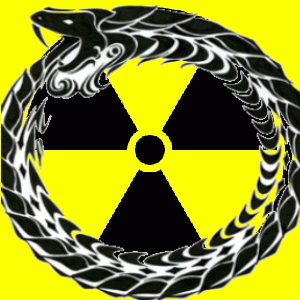Pakistan's army generals are known to walk with a swagger. They have reason to. After all, they have been ruling the country of over 200 million people like their personal fiefdom for over half a century. Also, they are in an exclusive club of one - Pakistan is the only Islamic country that possesses nuclear weapons. (Just don't bring up the fact that these generals have lost four wars against India.) So why are they suddenly squirming after Wikileaks hit the ceiling?
According to a leaked cable, more than the al-Qaida, American drones or a hostile Afghan government, what is scaring the living daylights out of the Pakistani generals is Cold Start - India's version of blitzkrieg. So deeply does it dread this new war fighting strategy that the Pakistani military has cranked up its production of nuclear weapons, sparking a nuclear arms race in the region.
So what exactly is Cold Start and how is it changing the military equation in this part of the world? Will this new doctrine of war offer India more options in combating Pakistani adventurism and rolling back Islamic terrorism? Or will it contribute to more regional instability?
To get the subcontinental drift, one has to look at the Pakistani military mindset. Each of the four wars - in 1948, 1965, 1971 and 1999 - was launched by the Pakistani military which factored in two key elements. One, despite their 0-4 record against India, it is ingrained in the Pakistani military that a Pakistani soldier is equal to 10 Indian soldiers, and therefore India's defenses should quickly collapse. There was also the bizarre belief - eerily still a serious consideration at the highest echelons of Pakistani military decision making - that divine intervention will be a decisive factor in India's defeat.
INDIA: LUMBERING GIANT
Now the whole jing-bang of India's military strategy is that after the defending corps halt Pakistan's armored thrusts, the elite strike corps will roll towards the border, penetrate deep into Pakistani territory to destroy the Pakistan Army through massive tanks thrusts and artillery barrages, supported by round the clock aerial bombing of military targets.
Sounds like a bullet-proof strategy. But in reality that has never happened because India's mighty military machine has the agility of an elephant on tranquilizers. Its strike corps are based in central India, a significant distance from the international border. It takes anywhere from two to three weeks for these three elite armies to reach the front.
Because of the long mobilization period, the intervention of Western nations and the truce-happy nature of India's political leadership, India's military brass could not use their strike forces in three of the four wars.
THE NEED FOR SPEED
This is, of course, what Cold Start is intended to avoid. According to Dr Subhash Kapila, an international relations and strategic affairs analyst at the South Asia Analysis Group, Cold Start is designed to seize the initiative and finish the war before India's political leadership loses its nerve.
"Long mobilization time gives the political leadership in India time to waver under pressure, and in the process deny the Indian Army its due military victories," says Dr Kapila. "The new war doctrine would compel the political leadership to give political approval "ab-initio' and thereby free the armed forces to generate their full combat potential from the outset."
The crux of Cold Start is this:
* Strike corps won't be allowed to languish in the hinterland. There will be eight "Battle Groups", comprising independent armoured and mechanised brigades that would launch counterattacks within hours.
* These Battle Groups will be fully integrated with the Indian Air Force and naval aviation, and launch multiple strikes into Pakistan.
* Each Battle Group will be the size of a division and highly mobile unlike the lumbering giants, the strike corps.
* And ominously for Pakistan, the Battle Groups will be moved well forward from existing garrisons. India's strike forces will no longer sit idle waiting for the opportune moment, which never came in the last wars.
CORNERING PAKISTAN
In a paper on Cold Start, Walter C. Ladwig of Oxford University writes, "As the Indian military enhances its ability to implement Cold Start, it is simultaneously degrading the chance that diplomacy could diffuse a crisis on the subcontinent. In a future emergency, the international community may find the Battle Groups on the road to Lahore before anyone in Washington, Brussels, or Beijing has the chance to act."
Cold Start is also aimed at paralysing Pakistani response. Although the operational details of Cold Start remain classified, it appears that the goal would be to have three to five Battle Groups entering Pakistani territory within 72 to 96 hours from the time the order to mobilize is issued.
(Note: You can view every article as one long page if you sign up as an Advocate Member, or higher).





